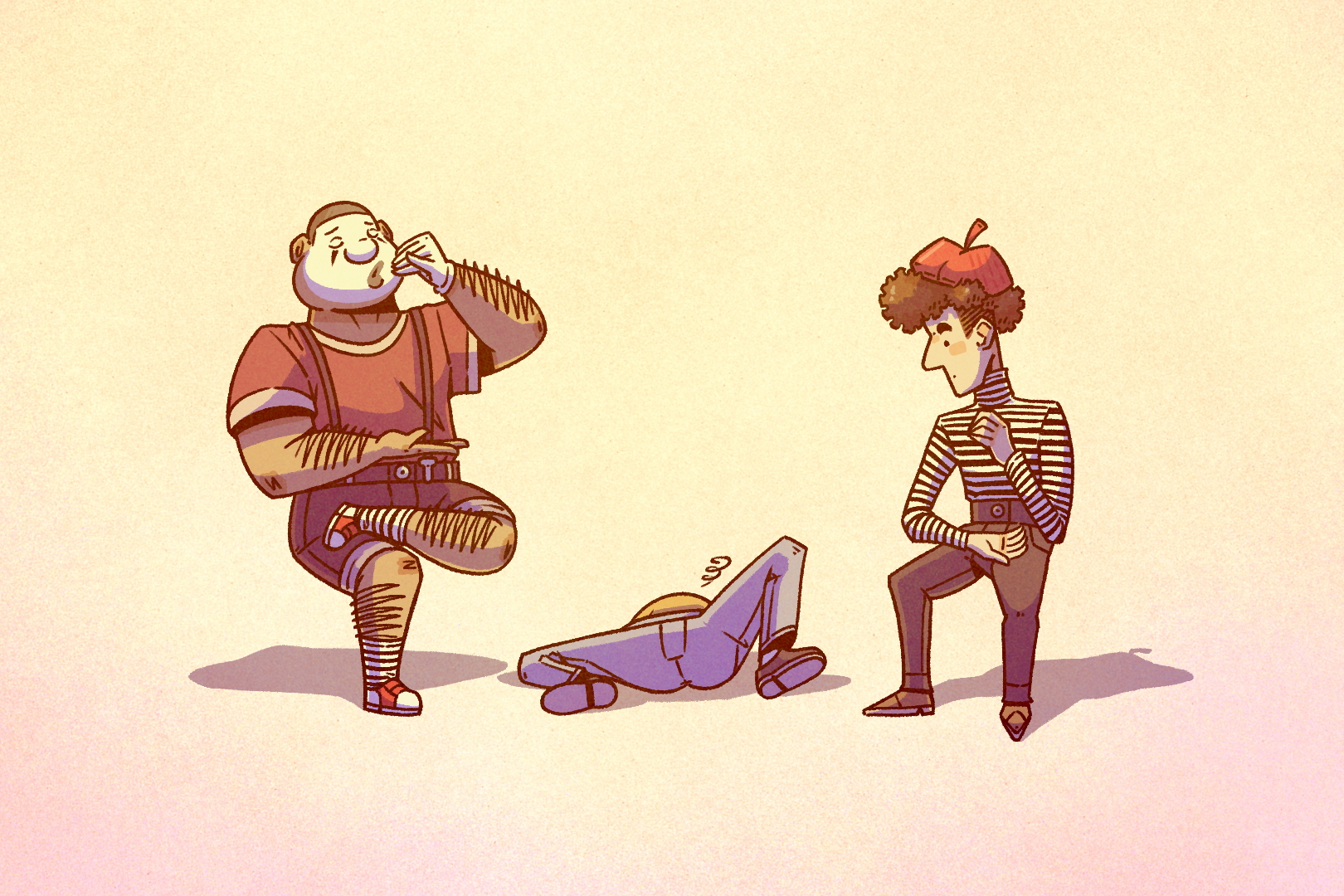Free theatre workshop brings mime to attendees of all experience levels.
On Tuesday, Feb. 27, Concordia hosted a “Mime as Non-Verbal Communication” workshop. Open to all regardless of affiliation with Concordia, the workshop described an exploration of body awareness, self-expression, and clown communication.
Hosted by Sue Proctor, a professional clown and mime with over 30 years of experience, it was an opportunity for those interested in learning more about the style and techniques of mime performance in a beginner-friendly setting.
“[Non-verbal communication] is such a significant part of how people communicate with each other,” Proctor said, describing the importance of the physical expression mime relies on.
“It’s very useful for people who have difficulty with language, either because they’re from another language or have difficulty with talking,” she said. “It’s a very fundamental way for humans to communicate.”
Some attendees at the workshop included Allyson Gray, a recent graduate from Concordia’s translation program who loves all things artistic, and Maya Kanitkar, a third-year biochemistry student at McGill who is playing a mime in an upcoming student production of Big Top Down. Other attendees included a theatre therapist, a post-doctoral student in dance, and both former and current acting students.
After everyone arrived, Proctor encouraged them to go around the circle and introduce themselves. She then led the group in a few rounds of mime ball, where attendees passed around an imaginary ball to each other. When she received it, she demonstrated how the ball she was holding could change size, weight, and elasticity before passing it back to an attendee, allowing others to determine the specifics of the ball they were throwing.
She continued to lead the group through exercises exploring movement centred around specific parts of the body, such as walking around the room and instructing attendees to be guided by their heads, shoulders, feet, hips, or nose.
Proctor touched briefly on the history of mime and some of the predominant techniques of performance. While many schools teach mime purely through physical instruction, Proctor explained that she best learned to mime when first visualizing the object she was working with in great detail.
She explained that it’s easiest to start working with actions you have already built muscle memory around, before guiding attendees to partner up and work to mime a daily activity.
The workshop concluded with everyone sharing something new they had learned from Proctor.
“Aside from it being a great learning experience, it was a fun atmosphere,” said Gray. “It was a place to experiment and learn without being afraid of judgment,” she said.
Kanitkar echoed similar sentiments. “I really enjoyed the whole ‘we’re trying things out together’ atmosphere,” they said. “It was a lot of fun to experiment with expressing different ideas in a new form of communication.”
Proctor’s passion for mime was evident to attendees, and her support of everyone present created an environment that encouraged exploration and wholehearted effort.
“I love making an invisible world visible, of creating something out of nothing, of creating a shared vision with people when there is nothing in the room,” said Proctor.
